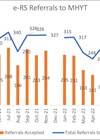Features
Missed Meyer-Weigert duplex ureter during emergency ureteric stenting for ureteric stones
The Meyer-Weigert rule is a fundamental anatomical principle in urology that describes the typical orientation of ureteral orifices in duplex kidneys. In a duplex system, the upper pole ureter usually inserts inferomedially, while the lower pole ureter inserts superolaterally. This...
Urology around the world: An overview of healthcare in Germany
Germany boasts a highly developed and comprehensive healthcare system, renowned for its quality and accessibility. The urology landscape in the country mirrors this overall excellence, characterised by a well-structured network of specialists, advanced technology, and a strong emphasis on patient-centered...
BAUS Annual Scientific Meeting 2024
Day 1 Toni Huw Mihailidis and Mriganka Mani Sinha Another year and another brilliant meeting in which urologists from the UK and around the globe assembled for a highly entertaining event. Day one kicked off with a topical and ever-pervasive...
From overseas to the UK: initial impressions
A few years ago we published stories from three international medical graduates detailing their experience of working as registrars in the UK (https://www.urologynews.uk.com/education/trainees-forum/post/initial-impressions-of-urology-in-the-uk-from-overseas-trainees). Here are three new countries and three new opinions. Dinelle Sirjuesingh, Trinidad and Tobago Trinidad and Tobago...
Shared decision-making – minimising the mismatch
In Western countries, we are spoilt for choice in almost every aspect of our lives, but does that reflect also in healthcare? While we have taken some big strides towards shared decision-making with our patients, the age-old physician dominance remains...
Systematic reviews and meta-analysis – a stepwise approach
As per Cochrane definition (2013), a systematic literature review (SR) attempts “to identify, appraise and synthesize all the empirical evidence that meets pre-specified eligibility criteria to answer a given research question” [1]. A meta-analysis (MA) is a statistical assessment of...
Delivering a trainee-led Urolink educational programme – my experience in Tanzania
In May 2023, I travelled to Moshi, Tanzania, where I visited Kilimanjaro Christian Medical Centre (KCMC) – a trip which was made possible through the collaborative efforts of the British Association of Urological Surgeons (BAUS) Urolink and with the support...
Urology National Selection: tips and tricks for a successful interview process
We invited Dominic Brown, the top-ranking candidate from the Urology National Training Selection Interview 2023, to share his wisdom on the interview process. Dominic is currently an ST3 working in North West London. Kelly Ong, Urology News Trainees Sub-Editor. 1....
Urology around the world: India: past, present, and future
Past India has the largest population in the world, standing at 1.43 billion as of September 2023. This vast population across a huge geographical area brings unique healthcare challenges, including the full range of urologic conditions. Urology is a relatively...
Urology around the world: Myanmar
In this article the author, a urologist from Myanmar, discusses the presentation, diagnosis and management of a condition common in his country. Urethral orifice stones Urolithiasis is one of the most common urological conditions, usually involving the kidneys, ureters and...
Intelligent triage: improving outpatient efficiency
Background Improving outpatient (OP) efficiency and service structure is of paramount importance as the NHS seeks to manage ever increasing demand in the wake of the COVID-19 pandemic. As we re-establish services and attempt to clear the backlog, new ways...
Frailty in urology – part 2
The first article in this series defined frailty and introduced the concept and importance of identifying patients living with frailty who undergo surgery, including those undergoing urological procedures. In the second part of this series we outline how to identify...















